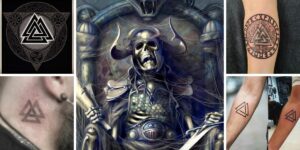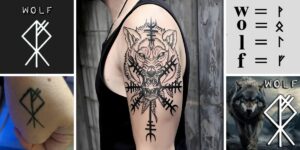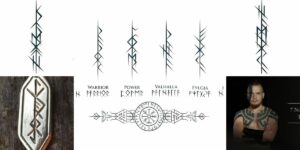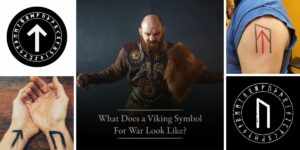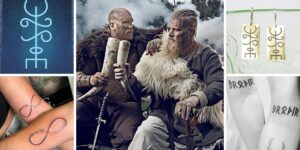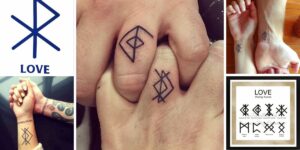Nordic runes, the ancient writing system of the Germanic peoples, hold a profound place in Viking culture, serving as more than mere letters. These symbols, etched into stone, wood, and metal, carried deep spiritual and cultural significance, embodying concepts like protection, destiny, and community. In recent years, there has been a growing fascination with runes, as people seek meaningful ways to connect with their heritage and strengthen familial bonds. Among these, the Nordic rune for family stands out, representing the enduring values of home, ancestry, and unity. This article explores the history, meaning, and modern relevance of runes associated with family, offering insights into how they can enrich our lives today while honouring their cultural roots.
The History of Nordic Runes
Nordic runes, particularly those of the Elder Futhark alphabet, emerged around the 2nd to 4th centuries CE, used by Germanic tribes across Scandinavia and beyond. This 24-rune system was not just a tool for writing but a sacred means of communication, imbued with mystical significance. Runes were carved into objects for everyday purposes, such as marking property, but also for magical and protective rituals. They were believed to channel divine energies, offering guidance and safeguarding communities.
In Viking society, runes were integral to daily life, appearing on runestones to commemorate the dead or on amulets for protection. The concept of family was central to Norse culture, with strong emphasis on kinship, loyalty, and ancestral legacy. This naturally led to the association of specific runes with family-related themes, such as heritage and nurturing bonds. Understanding these family Nordic runes provides a window into how Vikings viewed their familial and spiritual worlds.
Key Nordic Runes for Family

Several runes from the Elder Futhark are closely tied to the concept of family, each carrying unique meanings that resonate with familial values. Here are the primary Nordic rune for family symbols and their significance:
-
Othala (ᛟ): Often regarded as the quintessential family Nordic rune, Othala represents heritage, home, and ancestral legacy. It symbolises the connection to one’s roots, the land, and the family unit as a source of strength and continuity. Vikings used Othala in rituals to honour their lineage and protect their homesteads, ensuring prosperity for future generations.
-
Berkano (ᛒ): This rune embodies fertility, growth, and nurturing, making it a powerful symbol for family bonds. Berkano is associated with motherhood, caregiving, and the creation of new life, reflecting the protective and loving aspects of family. It was often used in blessings to foster harmony and growth within households.
-
Gebo (ᛗ): Representing gifts, partnerships, and balance, Gebo signifies the mutual support and love that bind family members. It highlights the importance of giving and receiving within relationships, fostering harmony and trust. Vikings inscribed Gebo on gifts or used it in rituals to strengthen familial and communal ties.
These Nordic rune family symbols were often combined in runic inscriptions or talismans to bless and protect families, ensuring their unity and resilience against challenges.
Why the Nordic Rune for Family Matters Today
In modern times, the Nordic rune for family continues to hold deep significance for those seeking to reconnect with their heritage or strengthen familial bonds. Runes like Othala, Berkano, and Gebo are popular in tattoos, jewellery, and home decor, serving as tangible reminders of family values and ancestral roots. For many, these symbols offer a way to honour their lineage while embracing the spiritual aspects of Norse traditions.
The resurgence of interest in family in Nordic runes reflects a broader desire for meaningful connections in an increasingly fast-paced world. Runes provide a sense of grounding, linking individuals to their ancestors and the timeless values of loyalty, love, and community. Whether used in personal meditation or as a family heirloom, these symbols resonate with those who value heritage and togetherness. Moreover, they serve as a bridge to the past, allowing people to explore their cultural identity in a respectful and meaningful way.
How to Incorporate Nordic Runes into Family Life
Incorporating Nordic rune family symbols into daily life can be a powerful way to celebrate heritage and strengthen familial bonds. Here are some practical and respectful ways to do so:
-
Meditation and Rituals: Use runes like Othala or Berkano in meditation to focus on family unity or personal growth. Carve or draw the rune on a small stone or piece of wood, holding it during reflection to connect with its energy.
-
Home Decor: Incorporate runes into your living space by engraving them on wooden plaques, incorporating them into artwork, or using them in family altars. For example, an Othala symbol above the hearth can symbolise protection and prosperity for the household.
-
Jewellery and Tattoos: Choose a family Nordic rune that resonates with your values, such as Gebo for partnership or Berkano for nurturing, and wear it as a pendant or tattoo. Ensure the design is created with cultural sensitivity, ideally by artists familiar with Norse traditions.
When using runes, it’s essential to approach them with respect for their cultural and historical significance. Avoid appropriating these symbols without understanding their context, and consider learning from reputable sources or consulting with practitioners of Norse spirituality. By doing so, you honour the Nordic rune for family and its place in Viking heritage.
The Nordic rune for family—embodied in symbols like Othala, Berkano, and Gebo—offers a timeless connection to the values of heritage, love, and unity that defined Viking culture. These runes, once carved to protect and bless families, continue to inspire modern individuals seeking to honour their roots and strengthen familial bonds. By thoughtfully incorporating these symbols into daily life, we can celebrate our shared history while fostering meaningful connections. Have you explored Nordic runes or used them to connect with your family’s heritage? Share your thoughts and experiences in the comments below, and let’s continue the journey into this ancient tradition together.
Norse Symbols for Death: Exploring Viking Runes, Deities, and Iconic Imagery
Table of ContentsThe History of Nordic RunesKey Nordic Runes for FamilyWhy the Nordic Rune for
Jul
Nordic Rune for Wolf: Symbols, Meanings & Viking Connections
Table of ContentsThe History of Nordic RunesKey Nordic Runes for FamilyWhy the Nordic Rune for
Jul
Nordic Rune for Warrior: Symbols of Strength and Protection in Viking Culture
Table of ContentsThe History of Nordic RunesKey Nordic Runes for FamilyWhy the Nordic Rune for
Jul
Nordic Rune for War: Powerful Viking Symbols of Strength and Victory
Table of ContentsThe History of Nordic RunesKey Nordic Runes for FamilyWhy the Nordic Rune for
Jul
Nordic Rune for Friendship: Meaning, Symbols, and Viking Tattoo Ideas
Table of ContentsThe History of Nordic RunesKey Nordic Runes for FamilyWhy the Nordic Rune for
Jul
Nordic Rune for Love: Symbols, Meanings & How to Use Them
Table of ContentsThe History of Nordic RunesKey Nordic Runes for FamilyWhy the Nordic Rune for
Jun


